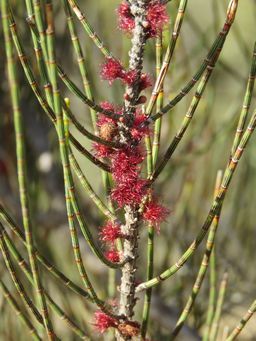Australia So Much to See







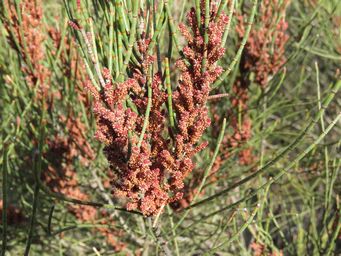

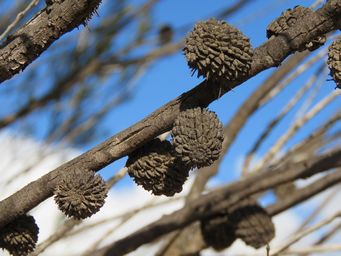

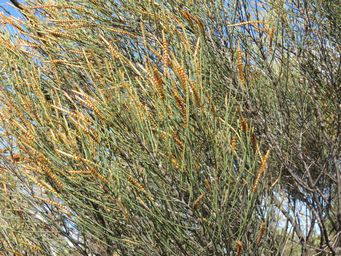
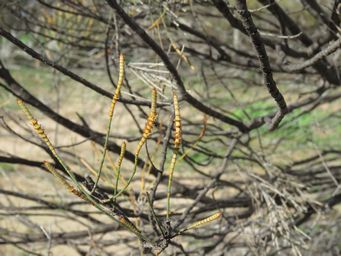
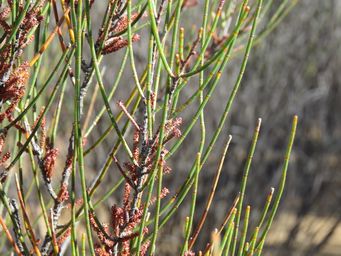
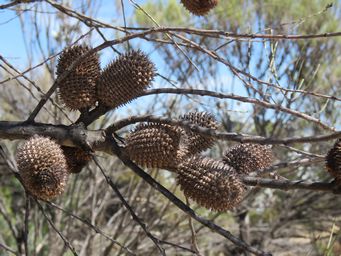
Allocasuarina acutivalvis
A tall She-oak which can grow to eight metres in height. Male and female flowers on separate shrubs, with only male flowers in these photographs. Female flowers are deep red and shaggy. Cones have spiky points, with mature cones shown above. Ribbed stems with foliage reduced to scales.
August when photographed.
Moorine Rock and Boorabbin, and
found from Shark Bay to Jerramungup, through the Wheatbelt, Great Southern and into the Goldfields region.
Allocasuarina spinosissima
Grows to four metres in height. Male flowers as shown here are a dull orangy red and densely cover
the stems. Female flowers are an orangy red colour. Stems are ribbed and there are short vertical lines along the main
stem. Cones are a squat shape and have long spikes.
August
Allocasuarina corniculata
This She-oak grows the five metres in height, and can be a spreading shrub. Fluffy red female flowers
at left. Cones have long spikey points. Below shows a cone just forming, and previous season cones, where only some
of the longer spikes are still remaining. Ribbed stems with foliage reduced to scales, and main stems also ribbed.
August
Allocasuarina humilis, Dwarf Sheoak, Dwarf Casuarina (female plant above, male shrub with pollenisers at right), forming
and spent cones below
A small Sheoak shrub with red fluffy flowers growing along the stems
Spring
Allocasuarina lehmanniana, Dune Sheoak (female plants above)
A large shrub, growing up to five metres, with separate male and female
plants. Female flowers a fluffy red, on an extended stem, which produces a cylindrical and pointed tipped cone. Some cones
above are distended into an irregular shape, which may be as a result of insect attack or disease
March
